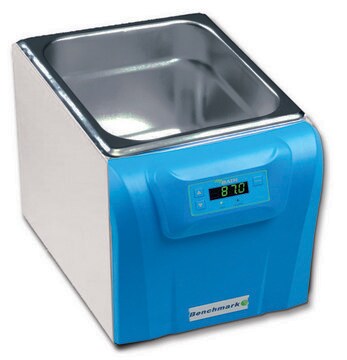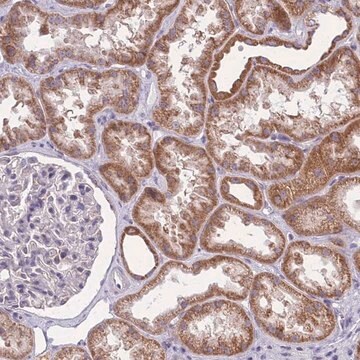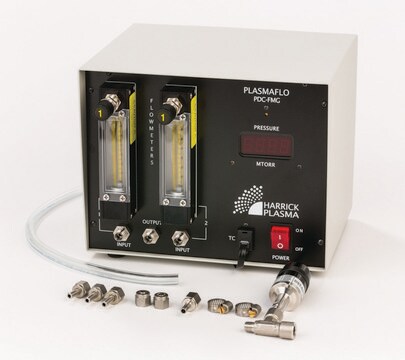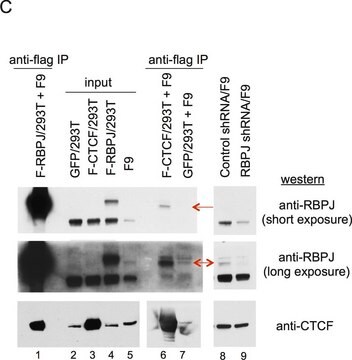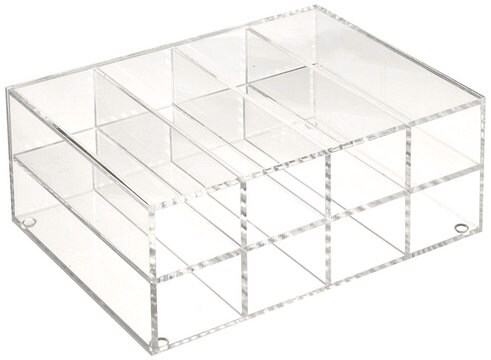CBL197F
Anti-Cytokeratin 14 Antibody, clone LL002, FITC conjugated
clone LL002, Chemicon®, from mouse
Sign Into View Organizational & Contract Pricing
All Photos(1)
About This Item
UNSPSC Code:
12352203
eCl@ss:
32160702
NACRES:
NA.41
Recommended Products
biological source
mouse
Quality Level
conjugate
FITC conjugate
antibody form
purified antibody
antibody product type
primary antibodies
clone
LL002, monoclonal
species reactivity
human
manufacturer/tradename
Chemicon®
technique(s)
immunohistochemistry: suitable (paraffin)
isotype
IgG3
NCBI accession no.
UniProt accession no.
shipped in
wet ice
target post-translational modification
unmodified
Gene Information
human ... KRT14(3861)
Specificity
Cytokeratin 14, a type I intermediate filament, is one of the two cytokeratins that distinguish stratifying epithelial cell types from simple epithelial cell types. Thus, cytokeratin 14 is expressed by stratifying/keratinocyte cell types but not by simple epithelial cells.
FUSION PARTNER: NS1 myeloma cell line
FUSION PARTNER: NS1 myeloma cell line
Immunogen
Thyroglobulin conjugated synthetic peptide of extreme carboxy terminus of human keratin 14 (last 15 residues)
Application
Research Category
Cell Structure
Cell Structure
Research Sub Category
Cytokeratins
Cytokeratins
Suitable for staining formalin fixed wax sections or frozen tissues. In order to obtain 100% consistency in staining it is considered essential to either microwave treat fixed tissue sections or alternatively use the more recently recommended high temperature antigen unmasking technique. Prior exposure of fixed tissues to enzyme (trypsin) digestion is deleterious to epitope expression. The fixative recommended for use with CBL 197 is neutral buffered formalin.
Optimal working dilutions must be determined by the end user.
Optimal working dilutions must be determined by the end user.
This Anti-Cytokeratin 14 Antibody, clone LL002, FITC conjugated is validated for use in IH(P) for the detection of Cytokeratin 14.
Physical form
The conjugate is supplied as a 100 test vial in phosphate buffered saline containing 10mM sodium azide and 1 mg/mL bovine serum albumin. For flow cytometry we recommend using 10μL of conjugate per test.
Storage and Stability
Store at +4°C protected from light. DO NOT FREEZE. For long term use and storage aliquot conjugate into small volumes and store at +4°C.
Legal Information
CHEMICON is a registered trademark of Merck KGaA, Darmstadt, Germany
Disclaimer
Unless otherwise stated in our catalog or other company documentation accompanying the product(s), our products are intended for research use only and are not to be used for any other purpose, which includes but is not limited to, unauthorized commercial uses, in vitro diagnostic uses, ex vivo or in vivo therapeutic uses or any type of consumption or application to humans or animals.
Not finding the right product?
Try our Product Selector Tool.
Storage Class Code
12 - Non Combustible Liquids
WGK
WGK 2
Flash Point(F)
Not applicable
Flash Point(C)
Not applicable
Certificates of Analysis (COA)
Search for Certificates of Analysis (COA) by entering the products Lot/Batch Number. Lot and Batch Numbers can be found on a product’s label following the words ‘Lot’ or ‘Batch’.
Already Own This Product?
Find documentation for the products that you have recently purchased in the Document Library.
Constitution of fibrin-based niche for in vitro differentiation of adipose-derived mesenchymal stem cells to keratinocytes.
Sivan, U; Jayakumar, K; Krishnan, LK
BioResearch Open Access null
Aldo Pezzuto et al.
Journal of thoracic disease, 10(7), E570-E576 (2018-09-04)
In non-small cell lung cancer (NSCLC), there is a consensus regarding the use of liquid biopsy, generally, to detect "druggable" mutations and, in particular, to monitor tyrosine kinase inhibitor (TKI) treatments. However, whether circulating tumor cells (CTCs) are better tools
Antibody markers of basal cells in complex epithelia.
Purkis, P E, et al.
Journal of Cell Science, 97 ( Pt 1), 39-50 (1990)
Propagation and phenotypic preservation of rabbit limbal epithelial cells on amniotic membrane.
Wang, DY; Hsueh, YJ; Yang, VC; Chen, JK
Investigative Ophthalmology & Visual Science null
Our team of scientists has experience in all areas of research including Life Science, Material Science, Chemical Synthesis, Chromatography, Analytical and many others.
Contact Technical Service
